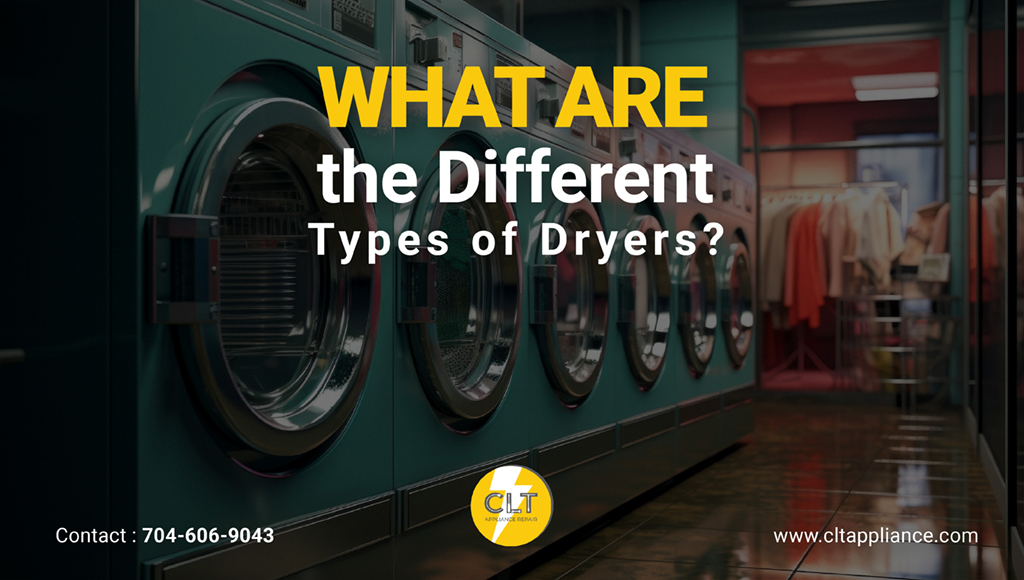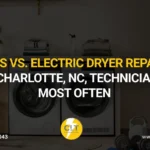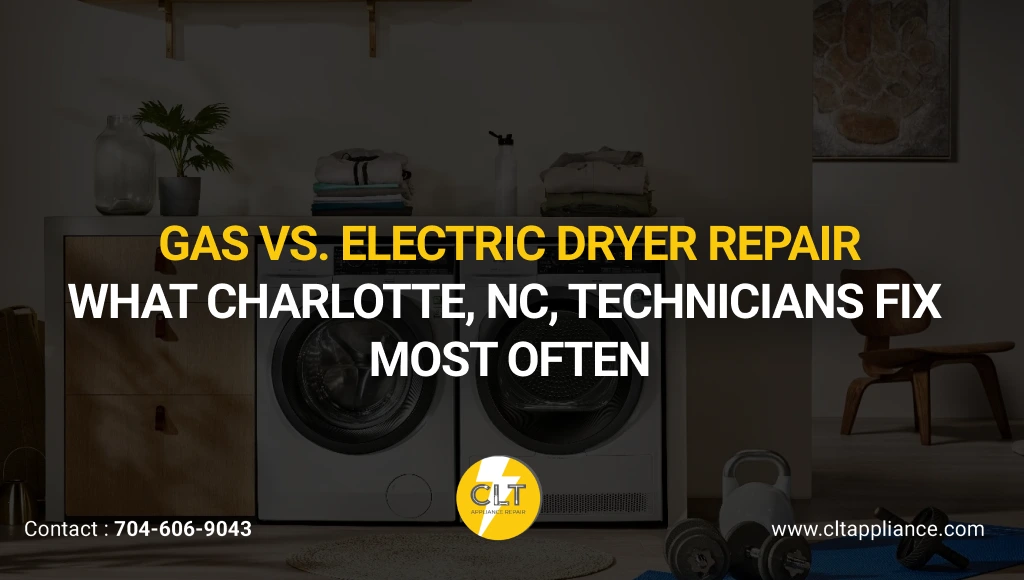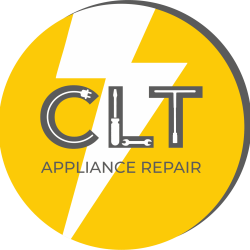You always seem to have an impressive range of dryer technologies in front of you now, right? Each is designed to meet specific needs and preferences. While some homeowners need a basic unit that simply gets clothes dry, others might require energy-efficient models or space-saving designs for apartment living.
Modern dryers now also offer various heating methods, installation options, and smart capabilities that weren’t available just a few years ago. These advancements have made it easier to find a perfect match for your specific situation – whether you’re dealing with limited space, strict energy requirements, or specific installation constraints.
Understanding these different technologies and options helps you make an informed decision that will serve your needs for years to come.
All The Different Types of Dryers You Should Know About
Gas and Electric Dryers: The Traditional Powerhouses
Gas Dryers
Gas-powered units stand out for their quick heating capabilities and lower operating costs. They require a dedicated gas line and proper ventilation system, which typically means professional installation. While the initial purchase price runs higher than electric models, many homeowners recover this cost through reduced utility bills over time. Most gas dryers heat up rapidly, which translates to shorter drying cycles and potentially better fabric care.
Electric Dryers
Electric dryers remain the most widely available option among different types of clothes dryers. They connect to a 240V outlet and generally cost less upfront compared to their gas counterparts. The straightforward installation process makes them particularly popular in areas without natural gas service.
Cost Considerations
When evaluating clothes dryer prices, consider both immediate and long-term expenses. Electric models typically start around $300, with premium models reaching $1,500 or more. Gas dryers generally start at $400 and can exceed $1,600 for high-end units. However, the true cost comparison must factor in:
- Installation expenses
- Monthly utility costs
- Expected lifespan
- Local utility rates
- Maintenance requirements
Modern versions of both gas and electric dryers now include advanced features like moisture sensors, multiple heat settings, and smart home connectivity. These features appear across both types, making the primary distinction their power source rather than their capability set.
Vented Versus Ventless Dryers
Traditional Vented Systems
Vented systems represent the most common configuration among types of dryers in North American homes. These units work by expelling warm, moist air outside through a duct system. They deliver consistently fast drying cycles and come with lower upfront costs compared to other options. Most homeowners appreciate their straightforward maintenance requirements and reliable performance. With capacity options ranging from 3kg to 9kg, they suit most household sizes.
The main consideration with vented dryers is their installation requirements. Since they need external ventilation, your placement options become limited to locations where a vent can be installed. This restriction of clothes dryer types often makes them less suitable for apartments or homes where external venting isn’t possible.
Ventless Technologies
For those seeking dryers that don’t need a vent, two main options exist in today’s market: condenser and heat pump models. Each brings its own set of advantages to modern laundry rooms.
Condenser Dryers
Condenser dryers represent an innovative solution for homes without external venting possibilities. These units collect moisture in a removable container or direct it through a drain hose, offering remarkable flexibility in terms of placement. While they typically come with a higher price tag than vented models, their energy efficiency and installation flexibility make them increasingly popular, especially in urban settings.
Key benefits that set them apart:
- No external venting required
- Flexible installation options
- Higher energy efficiency than traditional vented models
Heat Pump Dryers
Heat pump technology stands at the forefront of different types of clothes dryers, offering the most energy-efficient drying solution available today. These sophisticated units operate at lower temperatures than conventional dryers, providing superior fabric care while consuming significantly less energy. While they require a higher initial investment and typically run longer cycles, their operating costs remain notably lower over time.
Design and Installation Options
Modern different types of dryers offer various design configurations to match different home layouts and aesthetic preferences. These design choices go beyond mere appearance, significantly impacting the functionality and space efficiency of your laundry area.
Top-Load Matching Dryers
Top-load matching dryers feature control panels located at the back of the machine, designed to complement traditional top-loading washers. These models typically offer straightforward operation and tend to be more budget-friendly than their front-loading counterparts. While they can’t be stacked, they create a cohesive look when placed alongside matching washers, making them a popular choice for conventional laundry room layouts.
Front-Load Matching Units
Front-load matching dryers represent a more modern approach among different types of clothes dryers. They typically feature a viewing window and front-mounted controls, matching the aesthetic of contemporary front-loading washers. These units often come with advanced features and tend to offer more sophisticated cycle options.
Their design allows for convenient loading and unloading, while their streamlined appearance adds a modern touch to laundry spaces. You can also find Dryer repair Charlotte NC for these types of dryers easily.
Space-Saving Solutions
For homes where space comes at a premium, stackable configurations provide an excellent solution. These types of laundry dryers can be safely mounted above compatible front-loading washers using specialized stacking kits. This vertical arrangement effectively halves the floor space required for your laundry setup while maintaining full functionality.
All-in-One Options
Combination washer-dryers offer the ultimate space-saving solution, combining both functions in a single unit. While these machines typically have smaller capacities than separate units, they prove invaluable in apartments or tiny homes where space is extremely limited. Despite their compact size, modern combo units deliver surprisingly effective performance for smaller households.
Wrapping Up
Whether you opt for traditional vented models, energy-efficient heat pumps, or space-saving combinations, each type offers unique advantages. Consider your space constraints, budget, and long-term operating costs when making your selection. Remember that regular maintenance and prompt repairs play crucial roles in extending your appliance’s lifespan and maintaining its efficiency.
When it comes to dryer repair, trust the experts at CLT Appliance Repair. With years of experience servicing all types of dryers, our certified technicians provide fast, reliable repairs at competitive rates. Available for same-day service across the Charlotte metropolitan area, CLT Appliance Repair specializes in both traditional and modern dryer technologies.
Author

- John Bennett
- John Bennett is a seasoned appliance repair specialist at CLT Appliance Repair, where he brings over a decade of technical expertise and a strong commitment to customer satisfaction. With a background in electrical and mechanical systems, John has built a reputation for reliable, efficient, and honest repair services across a wide range of household appliances-including refrigerators, washing machines, ovens, and more.
Latest entries
News11/19/2025Why Your Dryer Smells Burnt: Common Causes & Fixes in Charlotte, NC
News11/19/2025Preventive Maintenance Tips to Extend Your Dryer’s Life in Charlotte
News11/18/2025Gas vs. Electric Dryer Repair: What Charlotte, NC, Technicians Fix Most Often
News11/18/2025Top 5 Signs Your Dryer Needs Professional Repair in Charlotte, NC









